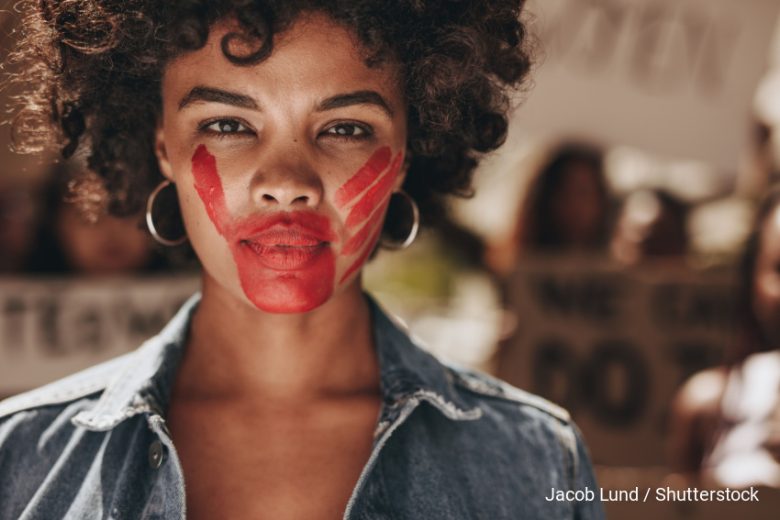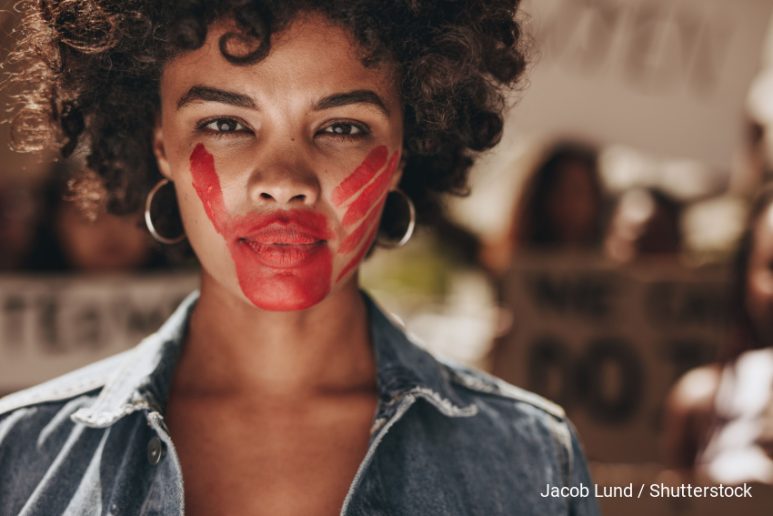By Raphael Mweninguwe
An increasing number of cases of sexual violence against women and girls with disabilities in Southern Africa goes unreported both by the media and family members, according to experts.
In an interview with Media Diversity Institute, the Zambia National Association of Women with Disability (ZNADWO) National Coordinator, Bwalya Chilufya, says cases of violence against women with disabilities in the region are on the increase and they are not reported in the media because “the media is part of the system that oppresses them”.

Chilufya says women and girl with disabilities are being raped, stigmatised and discriminated against by society and the media “has chosen to remain quite”.
“If the same atrocities were happening to women who have money or are well known in society, the media will not keep quiet. They will report about it not only once but many times by the same media house,” she says.
She also blames family members for covering up cases of violence against women.
“In most cases family members protect those who are perpetrating violence rather than their own victim within the family. In so doing they think they are running away from “shame of having a person with disability in the family,” she says.
Victor Mhango, Executive Director at Centre for Human Rights Education, Advice and Assistance (CHREAA) in Malawi agrees with Chilufya.
“The issues of women and girls with disabilities are under-reported because most violence is perpetuated by family members or caregivers of the victims and, therefore, it becomes a challenge for the victims to report,” says Mhango, a paralegal trained human rights activist.
Mhango points out that by virtue of having a disability, sexually abused women have “no access to reporting mechanisms that are available and even if they did, they wouldn’t want to report someone who they are dependent on for fear of being left without care”.
Harriet Kachimanga, Public Relations Officer for the Malawi Council for the Handicapped (Macoha) says although the media is to blame for not investigating such cases, part of the problem lies with the women themselves “because they often fear that reporting such issues might lead to them being abandoned by people who care for them”.
“In addition, their varying disabilities may also be a hindrance when it comes to sharing their ordeals. For instance, those with speech and hearing impairments need to use sign language. However, most of the media personnel are not conversant with sign language,” she says.
She says the other problem being faced is lack of inclusive messaging by the media which women and girls with disabilities can access.
“For example, those with visual impairments may need such messages in Braille or large print, and the media cannot provide such kind messages to them,” Kachimanga says.
Malawi and Zambia are not the only countries in the Southern African Development Community (SADC) where women and girls with disabilities face sexual violence. All other countries within the region face similar problems, but no data is available on sexual violence against women and girls with disabilities.
In Botswana, for example, a study titled Preventing Violence against Women and Girls with Disabilities in Botswana: Situation Analysis, published in 2018, indicates that in all Southern African countries national prevalence data on violence against women and girls with disabilities is not available.
The study further indicates that gender-based violence and HIV programmes in Botswana do not provide data on people with disabilities or information on their vulnerabilities, needs and desires, just like in many other countries in the region. It also indicates that government policies and programmes do not include specific measures to protect or promote the rights of women and girls with disabilities.
A 2017 study indicated that 21% of women between 15- 49 years had experienced some form of sexual violence in their life and out of these 4% had experienced sexual violence before the age of 18. These figures, according to the study, are not disaggregated to reflect the prevalence of sexual violence against women and girls with disabilities. Studies have shown that globally women with disabilities are twice as likely to experience intimate partner violence and other forms of gender-based violence as women who do not have a disability.
“It is an absolute truth that gender-based violence against women with physical disabilities remains silent especially in our African community. There are a number of factors contributing to this status quo,” says Gaolapelwe Badumedi Matsetse-Mpete, Founder of Woman-Supreme Botswana.
Matsetse-Mpete says one of the major reasons behind this silence is a lack of reporting of such “hideous offences to the authority and these reasons are interrelated”.
“Women with disabilities do not report gender-based violence because of very deep-rooted low self-esteem that stems from discrimination by the society. There is a lot of stigma surrounding disabled women. Society deems them sub-human and are seen as a burden to society, therefore, deserve to be abused,” she says.
Research that was published in Malawi in 2006 with the intention of uncovering cases of violence and abuse against women and girls with disabilities, sampled 23 women with physical, hearing, visual, or intellectual disability and women with albinism.
One of the study’s findings was that people with disabilities are often accessible to a potential abuser, as they may need help from different caretakers. They rarely have friends and this makes them more vulnerable to sexual abuse.
The research also shows that those who abuse women with disabilities are of the belief that having sex with women with disabilities helps to “cure” them of HIV/AIDS since “they are virgins” because women with disabilities are regarded as asexual and therefore “clean”.
“This is where we need the media to thoroughly investigate such beliefs. And we would love the media to report such cases so that they are brought to the fore and that authorities can further investigate them and prosecute those involved,” says Matsetse-Mpete.
Annie Zulu is a Zambian journalist who covers gender-based violence (GBV). She says violence against persons with disabilities is a very sensitive topic and most people, especially women, would rather not even talk about it and this is mainly because of how they are treated and stigmatised in communities.
“A lot of women with disabilities are victims of violence, yet very few are willing to report it to the relevant authorities or tell their story to the media. This makes it more difficult for journalists who cover such stories because journalism is about factual storytelling and not fiction,” she says.
She says the worse thing is that “there is no emphasis and data on violence against women with disabilities by most institutions and organisations that deal with GBV across the region”.
Policies and legal protection of women and girls with disabilities
Fred Simwaka, spokesperson at the Ministry of Gender, Children, Disability and Social Welfare in Malawi, admits that there is indeed lack of data specifically on women and girls with disabilities that could help informed decisions on how “we can deal with the problem”.
“It is good that this issue is coming from you journalists. On our part as government, we need to start at policy direction from where we can fully address such issues that are affecting women and girls with disabilities,” he says.
He says most of the data that is collected in the national statistics is not specifically attached to women and girls with disabilities.
“We will also need to work closely with the media on such issues if we are to address the problem that women with disabilities face. But as I said we need a policy direction that should guide us on how to move forward on the matter,” says Simwaka.
The African Union (AU) gender policy recognises the fact that women including those with disabilities face a lot of violence and abuse and member States through the policy should offer opportunities for the empowerment of women, guarantee their protection against violence and rape, as well as their participation in public and economic life.
The SADC Declaration on Gender and Development recognises an increase in cases of various forms of violence against women and children. SADC also recognizes the fact that measures which States have put in place to protect women and children against violence “have proved inadequate, ineffective and biased against the victims”.
The admission by SADC that measures that have been put in place to address the problem have failed or are ineffective clearly shows that even those women with disabilities have nowhere to go to seek help.
The SADC declaration calls on Member States to enact laws that aim at protecting women and children against any form of abuse. Members States, however, have laws in place, but they are not effective. In Malawi, for example, the Disability Act came into effect in 2012 and criminalises anyone who discriminates against someone on the basis of their physical status and if convicted the person is supposed to be jailed for a year.
But on the ground, nothing is there to suggest that this law is really biting considering that issues of violence against women and girls continue unreported.
A call for media action
“What the media should do now is to be aggressive in reporting issues of women and girls with disabilities. The media cannot assume that all is well when women and girls with disabilities are suffering under its watch,” says Chilufya.
Zulu says there is need for sensitisation on violence against women with disabilities through media content such as articles and radio/tv programmes.
She says awareness on “this issue among the communities by the media will bring mindset change and this will help bring down cases of violence against women and girls with disabilities”.
Mhango is calling on journalists to do more investigative journalism “so that they are not always depending on stories to come to them but rather they should reach out to the most vulnerable communities. They should also be trained on how to deal with issues of disability and gain trust so they can expose such violence”.
“To help these women, the media should intensify and normalise reaching out to them in their communities. These women have a lot of stories to tell but mostly do not know whom or how to reach out to those who can assist them. Importantly, the media should ensure accessible and inclusive messaging regarding violence against women,” concludes Kachimanga.
Photo Credits: Jacob Lund / Shutterstock

